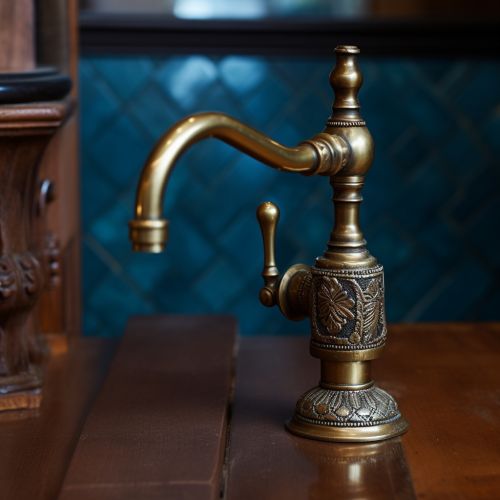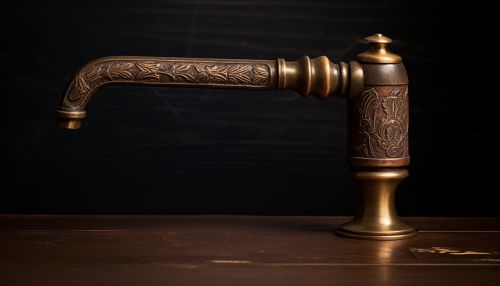Tap (valve)
Overview
A tap (also known as a faucet, water faucet, or spigot in some regions) is a device that controls the release of a liquid or gas from a pipe or container. Taps are typically used in plumbing systems and are a crucial part of everyday life, allowing us to access water for drinking, cleaning, and other purposes.
History
The history of the tap dates back to ancient civilizations. The Romans, for instance, used aqueducts and lead pipes to provide water to public baths and homes. The water was controlled by simple valves, which were the precursors to the modern tap. In the Middle Ages, taps were often made of bronze or brass and were used in monasteries and castles. The design of the tap has evolved over the centuries, with significant advancements made during the Industrial Revolution and the 20th century.


Design and Operation
A tap consists of several key components, including the spout, handle, valve, and aerator. The spout is the part from which the water is dispensed, while the handle controls the flow of water by adjusting the position of the valve. The valve, usually a ball, globe, or gate valve, regulates the flow of water. The aerator, located at the end of the spout, mixes air with the water to prevent splashing and reduce water usage.
Spout
The spout is the part of the tap from which the water is dispensed. It is typically made of metal, such as brass or stainless steel, and may be coated with chrome, nickel, or other finishes for aesthetic purposes. The design of the spout can vary widely, from traditional curved designs to modern straight lines.
Handle
The handle of a tap is used to control the flow of water. It can be turned, lifted, or pushed to adjust the position of the valve. Some taps have a single handle that controls both the temperature and flow of water, while others have separate handles for hot and cold water.
Valve
The valve is a crucial component of a tap, regulating the flow of water when the handle is turned. There are several types of valves used in taps, including ball, globe, and gate valves. Ball valves use a rotating ball with a hole through it to control water flow. Globe valves, on the other hand, use a plug that moves up and down inside a spherical chamber. Gate valves use a gate or wedge that moves up and down to control water flow.
Aerator
The aerator is a device at the end of the spout that mixes air with the water as it flows out. This serves several purposes, including preventing splashing, reducing noise, shaping the water stream, and conserving water by reducing its flow rate.
Types of Taps
There are many different types of taps, each designed for a specific purpose or to be used in a particular setting. These include kitchen taps, bathroom taps, outdoor taps, and industrial taps. Each type of tap has its own unique features and may operate differently.
Kitchen Taps
Kitchen taps are designed for use in the kitchen and are typically mounted on the kitchen sink. They often have a swivel spout to allow the water to be directed across a large area and may include features such as a pull-out spray head or a built-in water filter.
Bathroom Taps
Bathroom taps are designed for use in the bathroom, either on the bathroom sink, the bathtub, or the shower. They often have separate handles for hot and cold water and may include features such as a pop-up waste mechanism or a thermostatic control to maintain a constant water temperature.
Outdoor Taps
Outdoor taps, also known as hose bibs or sillcocks, are designed for use outside the home. They are typically used to connect a garden hose and are built to withstand the elements.
Industrial Taps
Industrial taps are designed for use in industrial settings, such as factories or power plants. They are typically larger and more robust than residential taps and may be designed to handle high pressures or corrosive fluids.
Installation and Maintenance
The installation of a tap involves connecting it to the water supply, usually via a flexible hose or rigid pipe. The tap is typically mounted on a sink, countertop, or wall, and may require a hole to be drilled for this purpose. Once installed, the tap should be regularly maintained to ensure it continues to operate correctly. This may involve cleaning the aerator, replacing worn seals, or lubricating the valve.
Environmental Considerations
Taps play a significant role in water conservation. Modern taps often include features designed to reduce water usage, such as aerators and flow restrictors. In addition, there are water-efficient taps that are designed to use less water without compromising performance. These taps are often labeled with a Water Efficiency Label to indicate their water efficiency rating.
